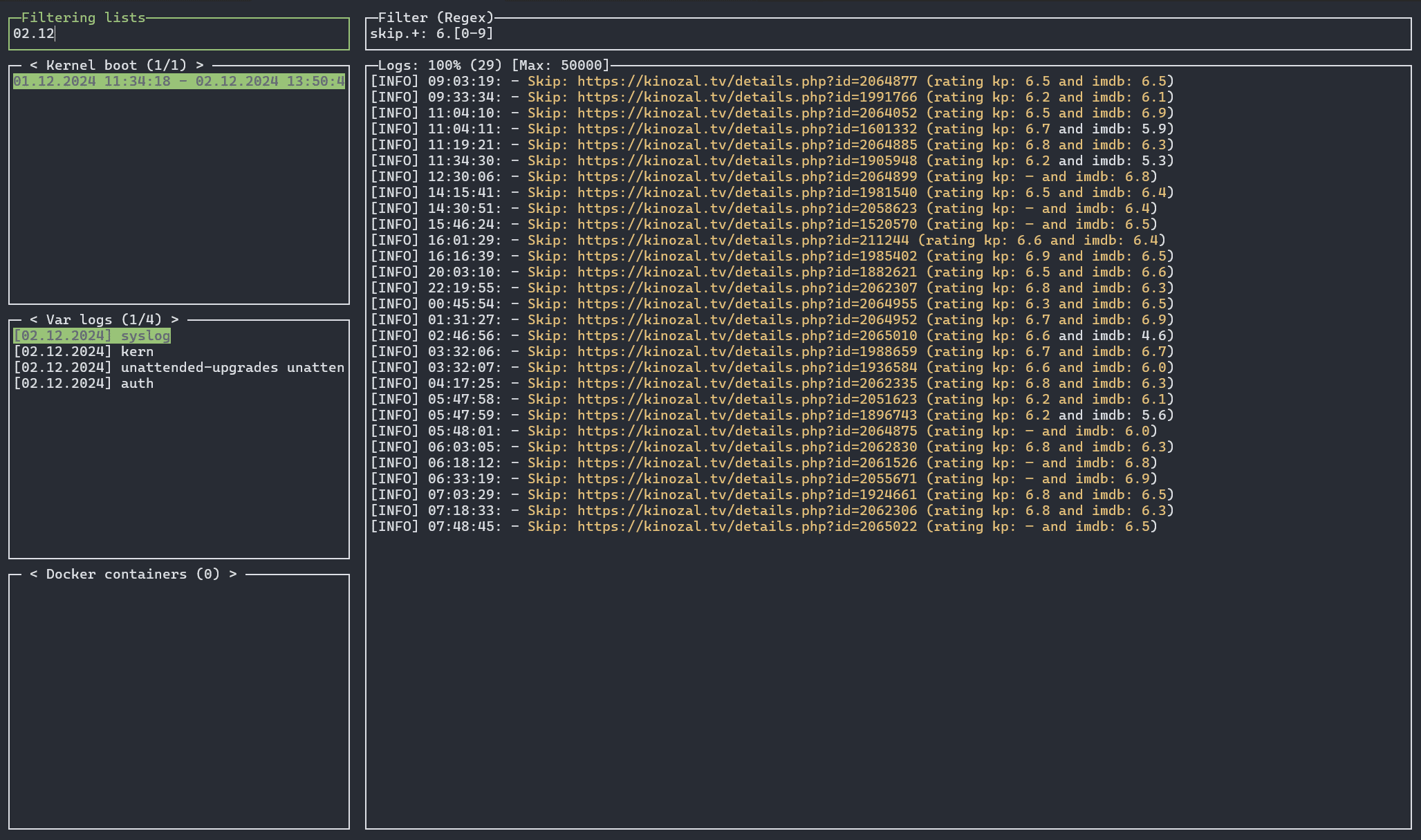The world of log management in Unix environments has just received a powerful tool that promises to simplify the analysis and handling of logs across systems and containers: Lazyjournal. This terminal user interface (TUI), developed in Go, integrates advanced filtering and visualization capabilities for system logs, Docker and Podman containers, and other services.
A Tool for Power Users
Inspired by popular utilities like LazyDocker and LazyGit, Lazyjournal offers an optimized experience for those who need to manage logs efficiently from the terminal. Its main features include:
- Universal log access: View logs from
journalctl, system files (e.g., Apache, Nginx, or syslog), Docker and Podman containers, and system services viasystemctl. - Compatibility with multiple formats: Supports logs archived in
.gzformat, providing full access to historical records. - Advanced filtering: Includes three search modes—exact, fuzzy, and regex—to locate information with precision.
- Real-time updates: Displays live logs, detecting and reflecting dynamic changes as they happen.

Efficient Filtering and Navigation
Lazyjournal stands out for its advanced filtering options, allowing users to search for key information quickly:
- Exact: Ideal for specific, case-sensitive searches.
- Fuzzy: Perfect for imprecise searches, where keywords can appear in any order within a line.
- Regex: Full support for regular expressions, ideal for advanced users.
Navigation within logs is intuitive, featuring keyboard shortcuts for quickly moving between lines, pages, and windows, enabling the analysis of large volumes of data efficiently.
Simplified Installation
Lazyjournal shines for its ease of installation. Users can download a single executable file with no dependencies or use tools like Go or curl to set up the tool quickly. A typical installation on Linux or macOS requires just one command:
curl https://raw.githubusercontent.com/Lifailon/lazyjournal/main/install.sh | bashThe project also supports architectures like Raspberry Pi and environments like WSL (Windows Subsystem for Linux), broadening its reach across different operating systems and platforms.
A User-Centric Design
Lazyjournal’s design emphasizes simplicity and functionality, leveraging the gocui library to provide a graphical interface within the terminal. With easy-to-remember key combinations, users can switch between windows, apply filters, and navigate logs seamlessly.
Highlighted shortcuts include:
- Tab: Switch between windows.
- Ctrl+R: Refresh the current log.
- Ctrl+C: Exit the application.
Roadmap and Future Enhancements
The development of Lazyjournal doesn’t stop here. Planned improvements include support for macOS and RHEL-based systems, syntax highlighting for log outputs, and compatibility with Windows event logs via PowerShell. The team is also working on enabling remote machine access through the SSH protocol, further expanding its functionality.
Alternatives and Competition
Lazyjournal positions itself as a robust option compared to existing tools like lnav and Dozzle. However, its focus on simplicity, advanced filtering, and container compatibility makes it an appealing solution for system administrators and advanced users.
Conclusion
Lazyjournal redefines log management in Unix environments, integrating advanced functionalities into an intuitive terminal interface. With support for multiple systems and containers and a focus on productivity, this tool promises to become indispensable for anyone seeking complete control over their system logs.
For more information or to download Lazyjournal, visit its official GitHub repository: Lazyjournal on GitHub.

